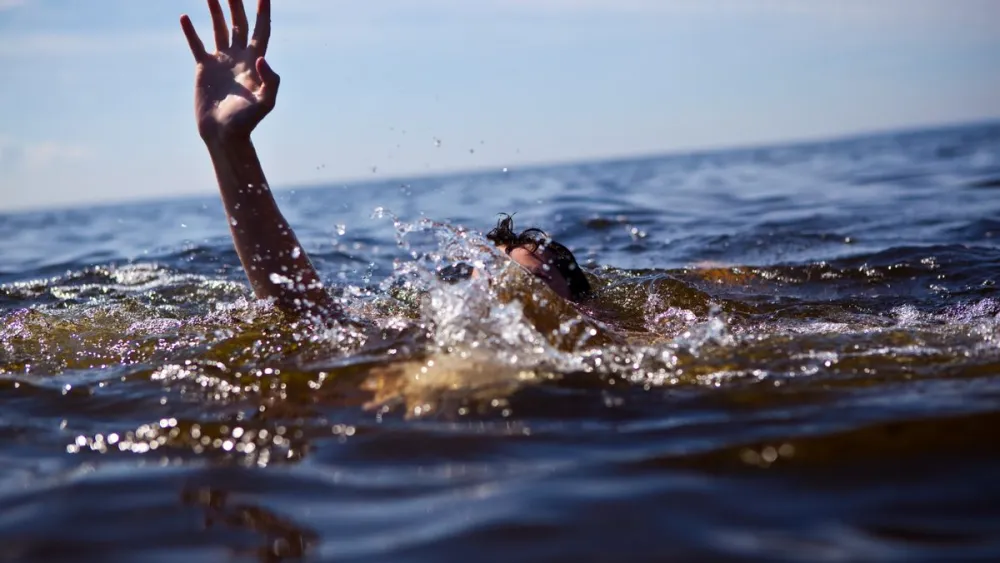
 Drowning illustration
Drowning illustrationSupposing your area has received above-normal rainfall and in the process of wading through the waters, one of your colleagues begins to drown.
Or you might be somewhere in a swimming pool or on the beach when you witness someone drowning. It might be an adult or a child.
In most cases, people who find themselves in such a situation are left unaware of what to do.
Drowning is a process where a living organism experiences
respiratory impairment from submersion or immersion in liquid.
Online medical site Healthline says the outcomes of this impairment often result to having other
medical complications such as hypoxia (lack of oxygen) which can cause brain
damage, aspiration, respiratory failure and potentially even death if action is
not taken urgently.
Other symptoms for someone who nearly drowned, according to
Healthline include cold or bluish skin, abdominal swelling, chest pain, cough,
shortness or lack of breath and vomiting.
Drowning happens very quickly, but it does take place in
stages. The stages can take between 10 and 12 minutes before death occurs.
For young children drowning may happen much more quickly, experts say.
During the first several seconds after water is inhaled, the
drowning person is in a state of fight-or-flight as they struggle to breathe.
As the airway begins to close to prevent more water from
getting into the lungs, the person will start to hold their breath
involuntarily. This takes place for up to 2 minutes, until they lose
consciousness.
The person becomes unconscious. According to Healthline, during this stage, they can
still be revived through resuscitation and have a chance at a good outcome.
Breathing stops and the heart slows. This can last for several minutes.
The body enters a state called hypoxic convulsion. This can
look like a seizure. Without oxygen, the person’s body appears to turn blue and
may jerk around erratically.
The brain, heart, and lungs reach a state beyond where they can be revived. This final stage of drowning is called cerebral hypoxia, followed by clinical death.
The Ministry of Health, along with the World Health
Organization (WHO), recognise drowning as a significant public health issue,
with a focus on prevention and addressing the high number of deaths, especially
in low and middle-income countries.
According to WHO, there are an estimated 300,000 annual deaths
globally that are attributed to drowning with the statistics disproportionately
affecting young people and children more.
It is also said to be the fourth leading cause of death for
children aged one to four years and the third leading cause for children aged five to 14
years.
It is estimated that 92 per cent of drowning deaths worldwide occur in low and
middle-income countries.
In Kenya alone, drowning deaths reached about 1,200 which
accounts for 0.46 per cent of total deaths in 2020, according to WHO data.
These deaths are frequently linked to daily, routine
activities, such as bathing, collecting water for domestic use, travelling over
water on boats or ferries, extreme weather conditions, and fishing.
To prevent drowning and in other cases save someone from
drowning, it is recommended to gather a number of tips and skills that can
help save your life or another person’s life.
In cases of extreme weather conditions especially heavy
rains, the Ministry of Health recommends avoiding swollen rivers, installing barriers to control access to water hazards and training bystanders with
cardiopulmonary resuscitation (CPR) which can help save lives through rescue
and resuscitation.
CPR is the act of repeated chest compressions of the chest
in an attempt to restore or maintain blood circulation in the body of someone
who has gone into cardiac arrest.
There are two types of CPR in which both have a potentially
life-saving impact.
One is the Hands-only CPR which involves the trusted source
calling for help and then pushing on the chest in a rapid motion. These
movements are called chest compressions.
Hands-only CPR can prevent a delay in getting blood moving
through the body.
The other one is the traditional CPR with breaths which is also
called the CPR with breaths.
This alternates chest compressions with mouth-to-mouth
breaths.
This type of CPR can give the body more oxygen in the
critical moments before help arrives.
United Nations Children's Fund (UNICEF) recommends regular attention
and supervision for young children when playing around water as they are
vulnerable with some who can drown in as little as 25 seconds.
Deploying them with necessary swimming and water safety
skills is also crucial.
“A person or child in trouble may be splashing and waving
their arms, but that is not always what drowning looks like,” UNICEF says.
“Someone who is drowning may be trying to swim but not
making any forward progress, pressing their arms up and down at their sides
trying to keep their head above water or trying other ways to stay afloat.”
The agency therefore advises potential witnesses who suspect of someone drowning to always call for help as the victim is unlikely to be in a position to do so.
This will enable the lifeguard professional or emergency first responder to act fast.
Healthline recommends avoiding driving on flooded roadways,
running around pool edges and desisting from drinking alcohol while swimming or
boating.













